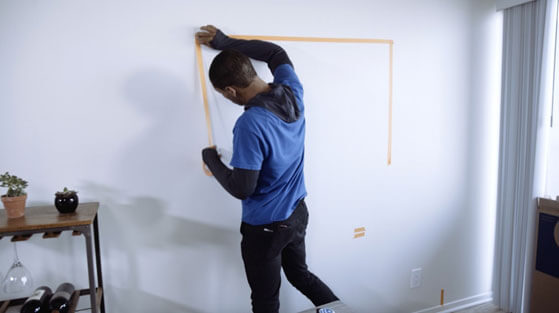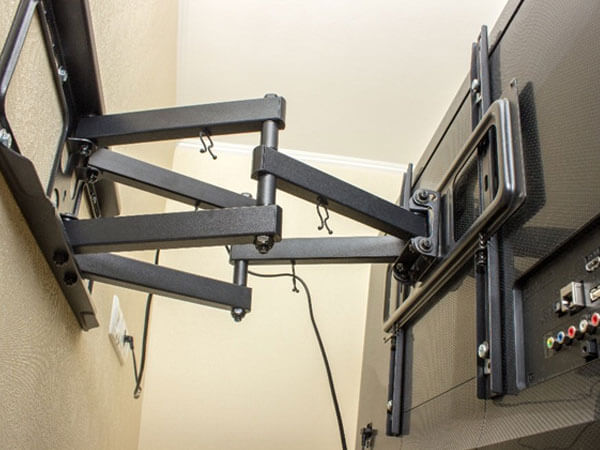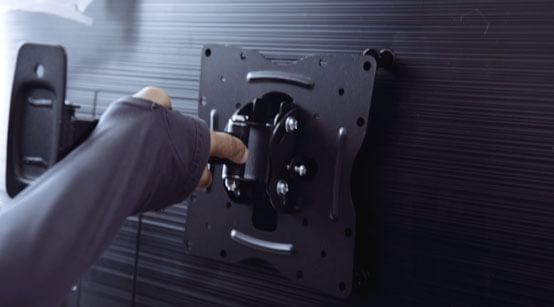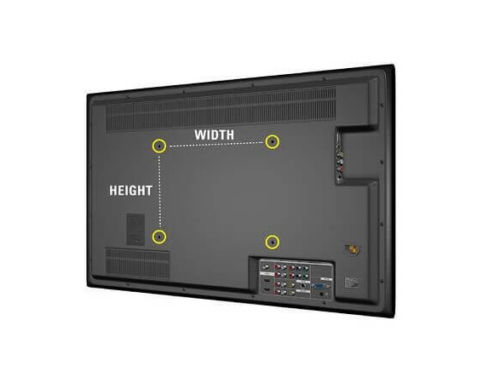With today’s smart phones becoming mini computers with larger and larger screen sizes, TVs are also evolving. Although the earliest flat-panel models emphasized their lightweight design, now everyone seems to be looking for oversized flat-panel TVs for the ultimate entertainment experience.
If you have bought this oversized flat screen TV, you may want to see it from all angles and hang it on the wall. Hanging the TV on the wall will look good and save space, which involves the bracket bearing the weight of the TV – wall mounted TV brackets. Once you know where it will be connected, the type of bracket you want, VESA mode, TV weight and size, you can easily install it on the wall. But how much weight can a TV bracket bear to ensure that your expensive TV won’t fall to the floor?
Generally speaking, the size and weight of TV are closely related. The bigger the TV, the heavier it is. The TV bracket will have a maximum weight rating and a range of compatible VESA standards. As long as your TV is within the specified range, the bracket can easily bear the weight of the TV. Now as long as you understand the following aspects, you can completely not worry about this problem.
Installation Position

Most TV brackets come with the hardware required for installation on dry walls, including bolts and wall anchors. Unfortunately, if your TV will be installed on a plaster or brick wall surface, you may need different installation hardware and tools. This may mean an additional trip to the hardware store, and the use of appropriate hardware will ensure that the bracket can withstand the weight of the TV.
Another factor you should consider is the distance from the TV to where you sit. If you don’t want to be too close or too far away, and you want the best image and sound quality. One rule to follow is that the TV distance ratio of standard HDTV should always be 2:1, and that of 4K Ultra HD TV should always be 1.5:1 or 1:1.
Installation Type

Deciding how to watch TV will help you decide which type of installation you need. If your TV can be installed at the perfect height and you don’t need to connect to the socket or TV port often, the fixed model will be the best choice. The standard and ultra-thin model design is the easiest to install, occupies the least space and has the lowest cost.
If your TV is higher than 42 inches, such as above the fireplace, you need a tilting model design. The tilting TV bracket will allow you to adjust your viewing angle up and down for the best picture quality.
Finally, a full-motion TV bracket can be adjusted in all directions, which is very suitable for installation in multiple seating areas and corners. This full-motion models will be stronger than other models and keep the weight of the TV in a fully extended position without sagging.
VESA Compatibility

Generally, there is a generic installation mode on the back of all TVs to adapt to the connection of TV brackets. The Video Electronics Standards Association (VESA) determines which mode is the best configuration for easy installation and the best visual angle after installation.
You need to match the VESA Interface standard on the back of the TV with the TV bracket you purchased. To determine the size of the VESA, you need to measure the distance between the four holes on the TV horizontally and then vertically. Common VESA and TV sizes include: 200 x 200 for TVs below 32 inches; 400 x 400 for TVs below 60 inches; For 70 to 84 inch large screen TVs, the size is 600 x 400.


